
Sailing Like It’s 2019
It’s unfortunate that the 2020 Rolex Big Boat Series couldn’t be held this past weekend, as originally scheduled. The weekend was a beauty, and despite the constraints, many sailors took advantage of the sail-ready weather. The Bay looked so 2019 with boats cruising, racing and daysailing as far as a sailor could see. It was warm, with pleasant breezes in almost smoke-free air. Youth sailing was underway, some short-handed COVID-compliant racing (without the post-race socials) took place, boats were anchored off Angel Island, and dozens of boats were out sailing singlehanded or masked-up for safety.


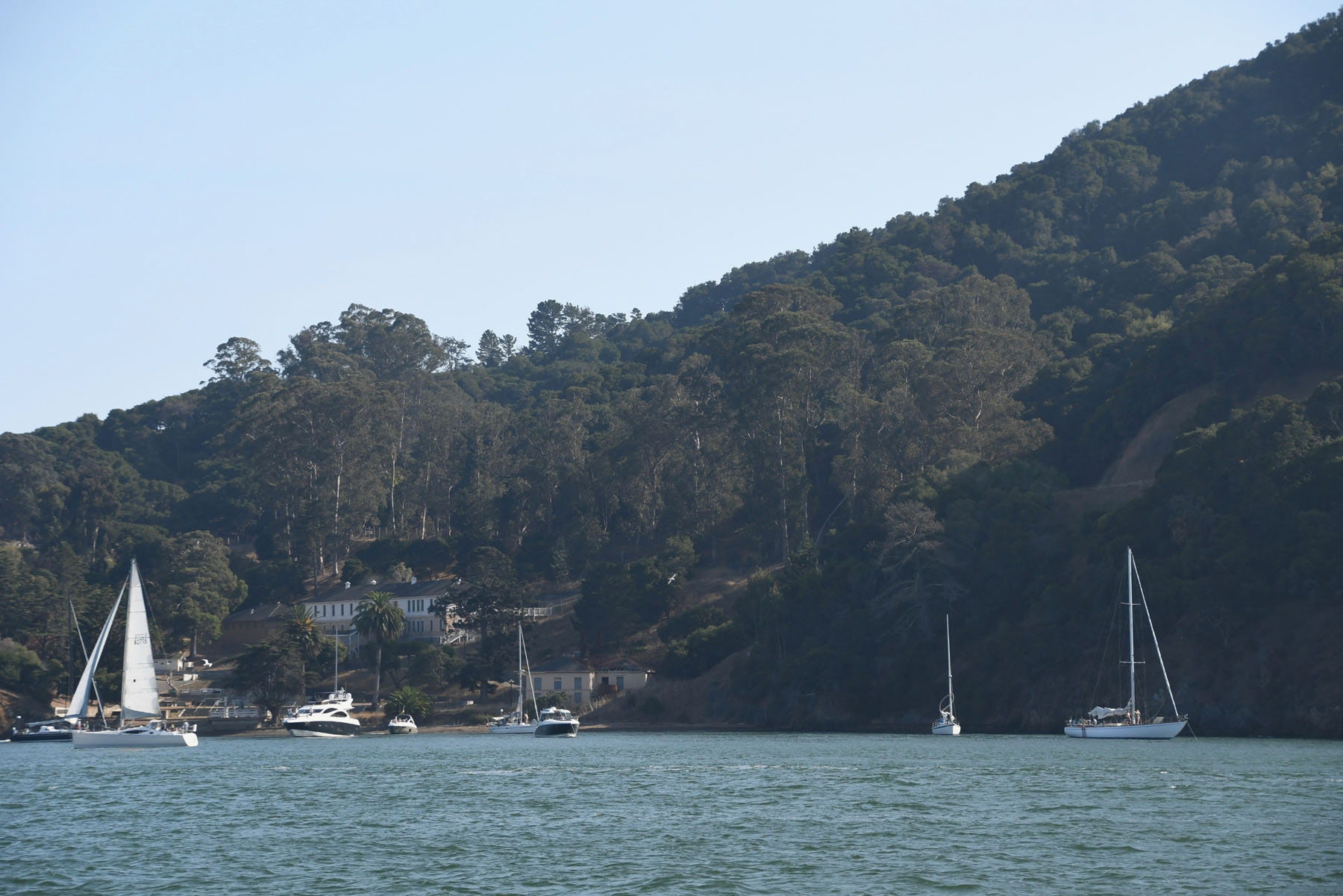
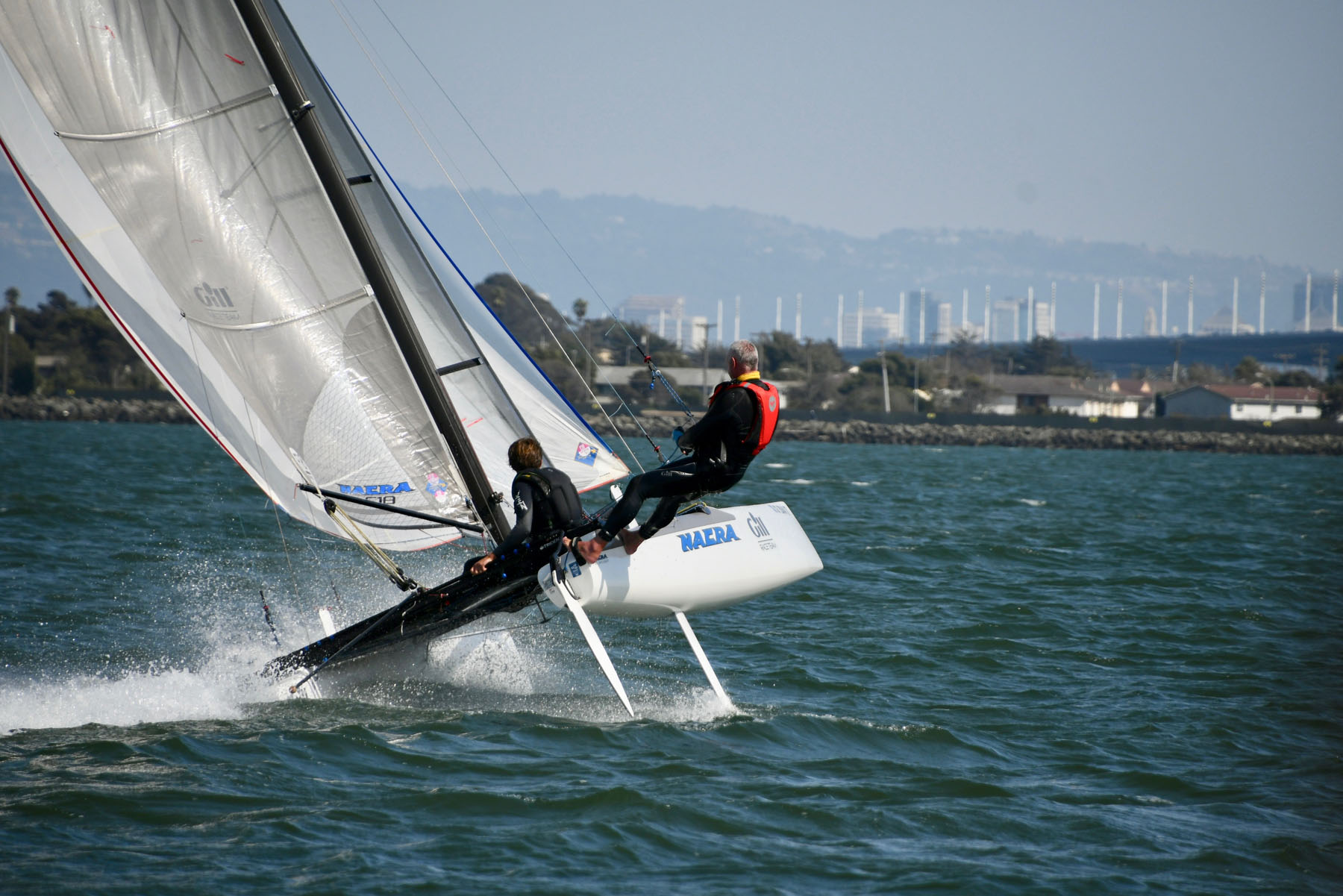
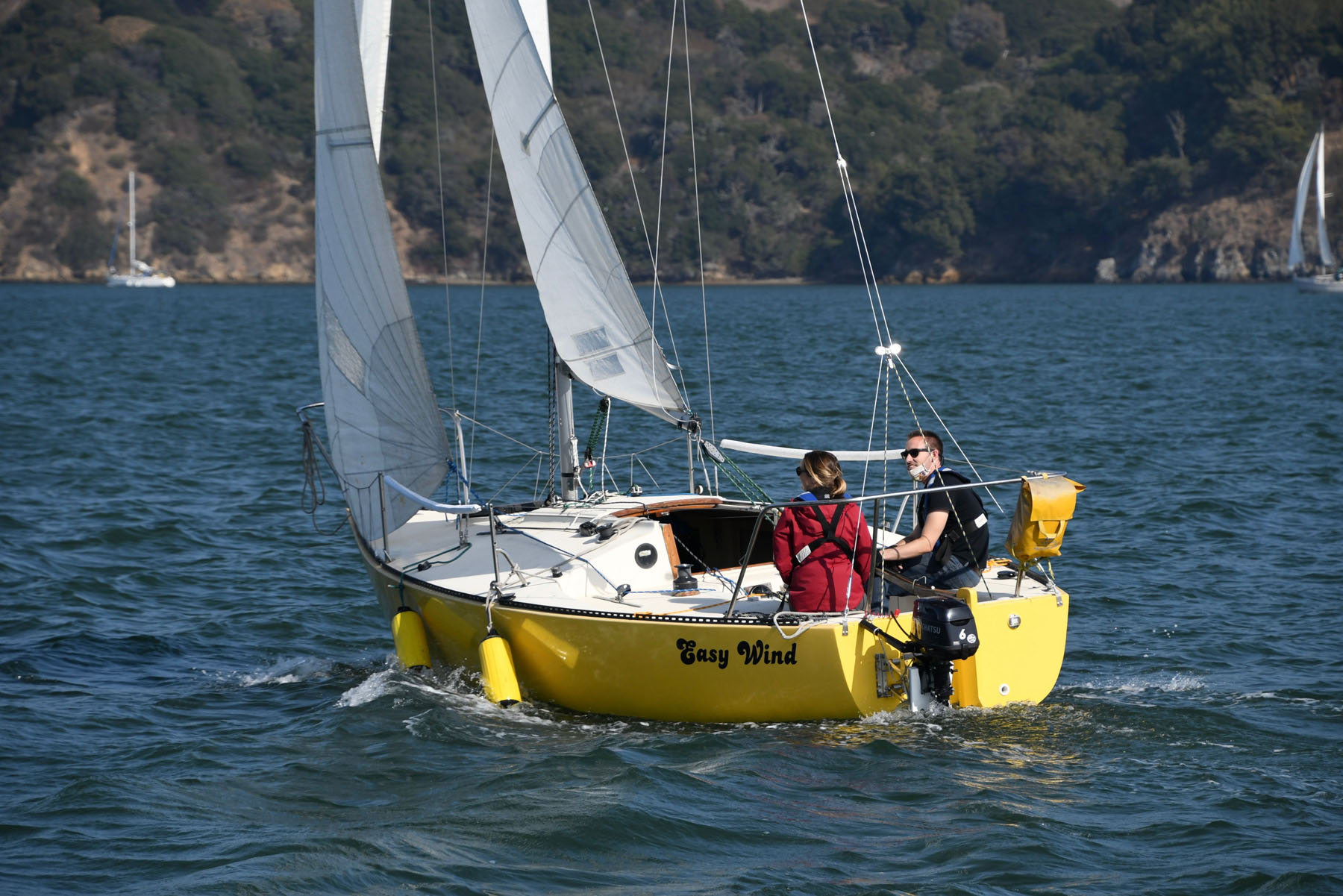

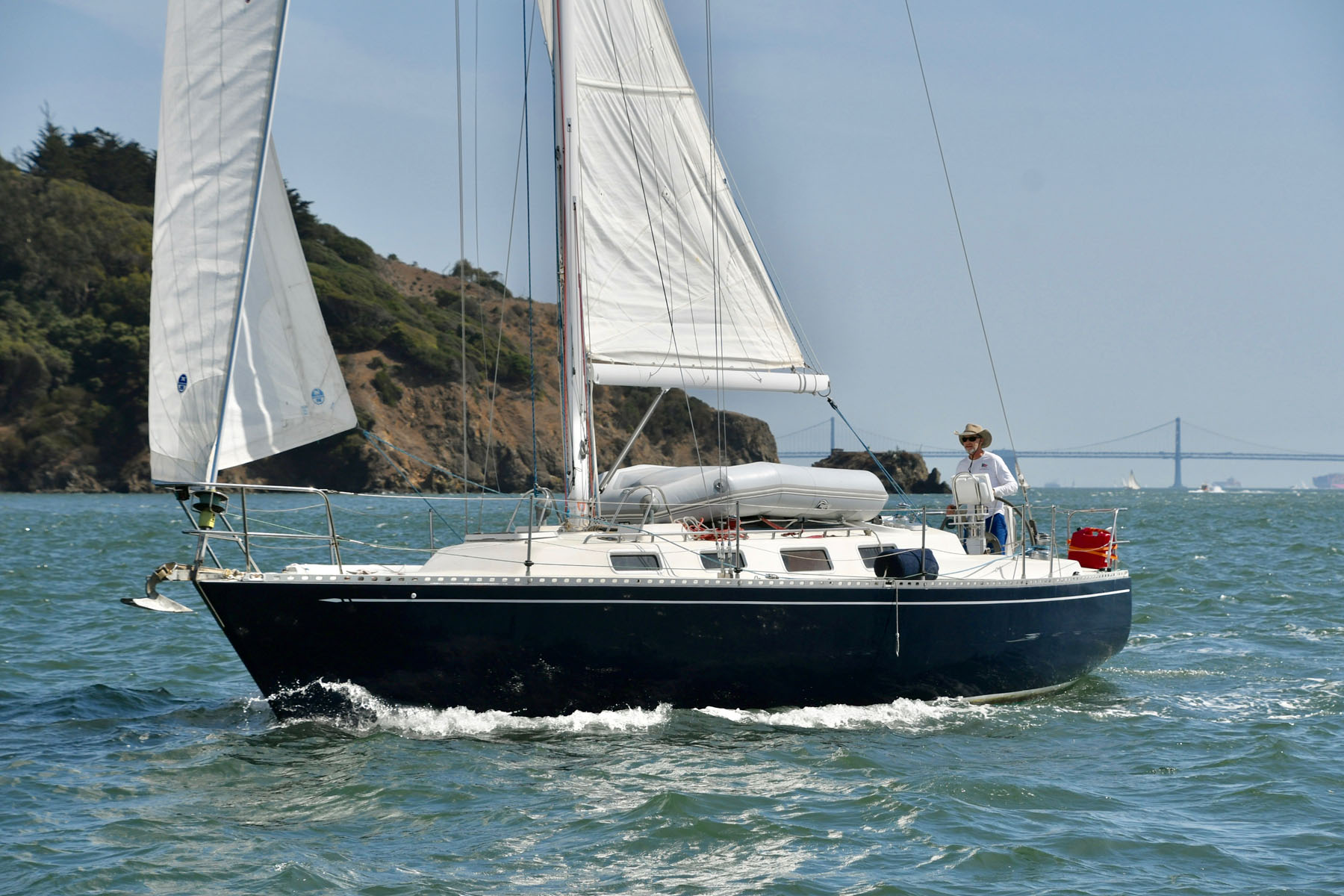

There are many reasons 2020 is a year we’d rather forget, but despite those reasons, sailing has remained a bright spot. Boat sales continue to be brisk as people stay home and rediscover what’s great about the Bay Area and the whole California coastline. Events have had to be canceled, but alternatives like the Nada Ha-Ha, with over 50 boats signed up to cruise-in-company to Mexico, and the Panama Posse with over 90 boats signed up to take them all farther south, are doing their best to fill in the blanks. BAMA (Bay Area Multihull Association) managed to sail their rescheduled Double Handed Farallones Race on Saturday, while the Corinthian Yacht Club started a fall racing series.
Did you get a great shot of your weekend sailing? Send it to [email protected] along with your name, your boat name, boat type and homeport. We look forward to seeing you out there again soon.
In the Fog of War, a Win at the Santa Cruz 27 Nationals
For many, the ongoing wildfires created a weekend of disappointments on September 11-13, with poor air quality forcing the postponement or cancellation of popular racing events, including the Island YC Island Nights series finale, the YRA Doublehanded Encinal Regatta, the Estuary Extravaganza and the Singlehanded Sailing Society’s Half Moon Bay Race.
So the 2020 Santa Cruz 27 National Championship in Santa Cruz was welcome news — and not only because the regatta actually happened. For the 2020 champions — Mark Voropayev, Rachel Cherry and crew — the result was as much a personal victory as it was a tactical one, as they competed for the first time together in the Nationals as ‘Team Kasatka’.

You may have read about Mark and Rachel’s bid for SC27 supremacy in Latitude 38’s September 2020 issue. That bid started in earnest with a self-driven refit of their craft (sail #119), followed by a division win at Richmond YC’s 2019 Great Pumpkin Regatta. But, nabbing the top spot was never a given — not only because of the stiff competition from the Santa Cruz-based racing community, but because of the regatta format and conditions.
The 2020 SC27 Nationals featured seven races over three days. The course extended from a point off Walton Lighthouse (on the west jetty of the Santa Cruz Harbor) to Natural Bridges State Park to the northwest, and to Soquel to the southeast. The format required both buoy racing skill and staying power, not to mention a good dose of navigational acumen. The entire region experienced thick smoke and fog over the weekend, which added a significant complication. Rachel Cherry mentioned on Facebook that “(the course) was perfect… but like 50 feet visibility.”

Kasatka stood up to a strong defense from reigning SC27 Nationals champion Evan Diola, who until the very days leading up to the Nationals was refitting his boat, Mistress Quickly. But, low visibility may have been in part responsible for Evan losing his title. “Day 1 in the books, so smoky and foggy we couldn’t find the weather mark or the finish. Ugh,” commented Evan on his Facebook page. Well, they say sailing is like 3D chess. And sometimes, it’s chess with the fog of war thrown in for good measure.
Back at Santa Cruz Harbor, Mark didn’t reflect so much on the weather as the hours of preparation that led up to the win. It was Mark’s first Nationals on Kasatka (Rachel drove in 2019, with Mark crewing on another boat), but one race of many within the SC27 fleet. The combination of the refit and experience from many hours of racing reinforced Team Kasatka as a competitive entry.

From Mark: “The long distance beat up to Natural Bridges was nice and because of good decision-making; that multiplied into a good lead. We were off the line well, managed to stay in front, and extended the lead almost every tack.”
Beyond great tactics, Rachel did confide in a more personal motivation. She shared, “It was great to finally be the winner. It’s just something I’ve wanted since my first Nationals in Monterey on Mistress Quickly. I really wish Rob Schuyler was here to congratulate us.”
Rob Schuyler was a past SC27 National Class president and commodore of Santa Cruz Yacht Club. He encouraged many young adults like Rachel to engage — or re-engage — in the sport of sailing. Mr. Schuyler passed away in 2019.
Above all, Kasatka’s skippers expressed gratitude for everyone who helped their team reach the 2020 Santa Cruz 27 National Championship. For Rachel, the most memorable part of the weekend was “how much support we got from everyone: The Santa Cruz Sentinel, Greg Haws (SCYC’s manager), both of our parents (who came to spectate), our shore crew Katie Judge, our Protector crew Joe Kauhaahaa, our sailmaker Seadon Wijsen from North Sails… Seemingly, the entire SC27 fleet and Bay Area sailing community was rooting for us this year. It was very special, and Kasatka felt all the love.”
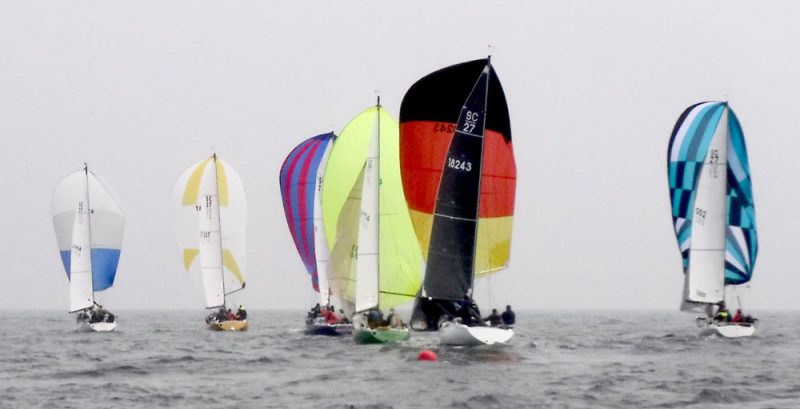
You can read further coverage of the 2020 Santa Cruz 27 National Championship in the Santa Cruz Sentinel. And SCYC’s regatta chair Stefan Berlinski has filed a race report for October’s Racing Sheet in Latitude 38.
KKMI Is Hiring
Latitude Hat Winner Found in Sacramento
Sacramento sailor John Abbott and his wife, Doreen, got more than a great magazine when they picked up a copy of this month’s Latitude 38 — they also won a hat! Tucked inside an undisclosed number of Latitude 38 magazines is a Golden Ticket, which entitles the finder to a Latitude T-shirt or hat.
“My wife picked up this issue with its surprising announcement ‘YOU’VE WON’ at Berkeley Marine Center, as our Catalina 30 Shellback was going back in the water with a fresh bottom,” John wrote.

Despite what John described as “a low blanket of smoke seasoned fog,” he and Doreen moored Shellback in Ayala Cove, where they spent their time enjoying “Volume 519 of the best sailing rag in the world.”
“By the way, re this month’s letters, our very first sail out the Gate was an early summer passage to Port Townsend that we intended to do in one go. The primary feature of our trip was a full gale off Point St. George that saw us turn and run for Crescent City.”
John is now the proud wearer of a Latitude 38 cap.
Autumnal Equinox Heralds Changing Seasons
At 6:31 a.m. Pacific Daylight Time on September 22, 2020, the sun will cross the equator as it moves from the Northern Hemisphere to the Southern Hemisphere. This is the autumnal equinox, the point in time when the sun is right over the equator. It signals the nominal end of summer and the beginning of fall — although the heat capacity of the oceans, among other things, causes a considerable lag in how we might perceive the seasons.
Of course, the sun is never really ‘on’ the equator, or ‘in’ any hemisphere on Earth. It’s about 93 million miles away at the approximate center of the Earth’s orbit. What we mean is, the sun is directly over a spot on Earth that is right on the equator, or to its north or south. This is one of the primary concepts of celestial navigation. Any celestial body, at any point in time, has one, and only one, point on Earth that is directly beneath it. That is, if you were standing at this point, the celestial body would appear to be directly overhead. It’s usually called the geographic position or ground position, or the GP, of the corresponding celestial body.

The sun’s GP moves around the Earth once every day, at a speed of about 900 knots. So to find the longitude of the GP, you need to know the time fairly precisely. At 900 knots it’s moving a mile every four seconds. Pop quiz: Does the sun’s GP move west to east or east to west?
The sun’s GP makes a much more leisurely trip north and south. It takes a full year to move from 23º south to 23º north and back again. So you only need to know time to the nearest hour or so to find the latitude of the sun’s GP to the nearest mile.

An annual publication called the Nautical Almanac has all the information you need to determine the position of the sun’s GP for any second of the year. This is very useful, because another basic concept of celestial navigation is that the angle of the sun above the horizon, measured with a sextant, tells you how far away you are from the GP. Ninety degrees, and the sun is exactly overhead so you are at the GP. 80 degrees, and you are ten degrees (600 nautical miles) away from the GP. Draw a circle on the globe. Wait an hour, take another sight, draw another circle, and you have a fix. The rest is details.
Here’s an interesting point about the sun at the equinox: Because the GP is on the equator, the sun appears to rise due east and set due west regardless of the observer’s latitude. This might not be intuitively obvious, but it’s easy to prove, and you can do it without any math. (Hint: Consider the orientation of the terminator, the line between sunlight and shadow on the Earth’s surface.)

The same is true about the direction of rising and setting for any celestial body with a GP over the equator. For the sun it only happens twice a year. For stars, where the latitude of the GP is essentially constant, the stars on or near the equator can always be used as a true east or true west reference when rising or setting. The belt of Orion is probably the best example: Alnilam, the rightmost star of the belt, is at about one degree south latitude, and stays there all year.
This will be important if you ever find yourself navigating a Polynesian voyaging canoe from Tenararo to Moruroa.

